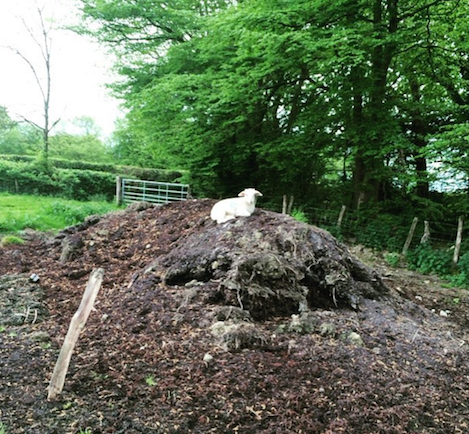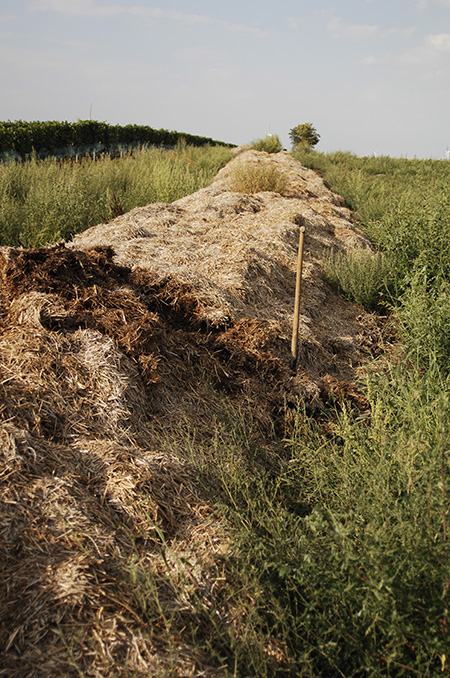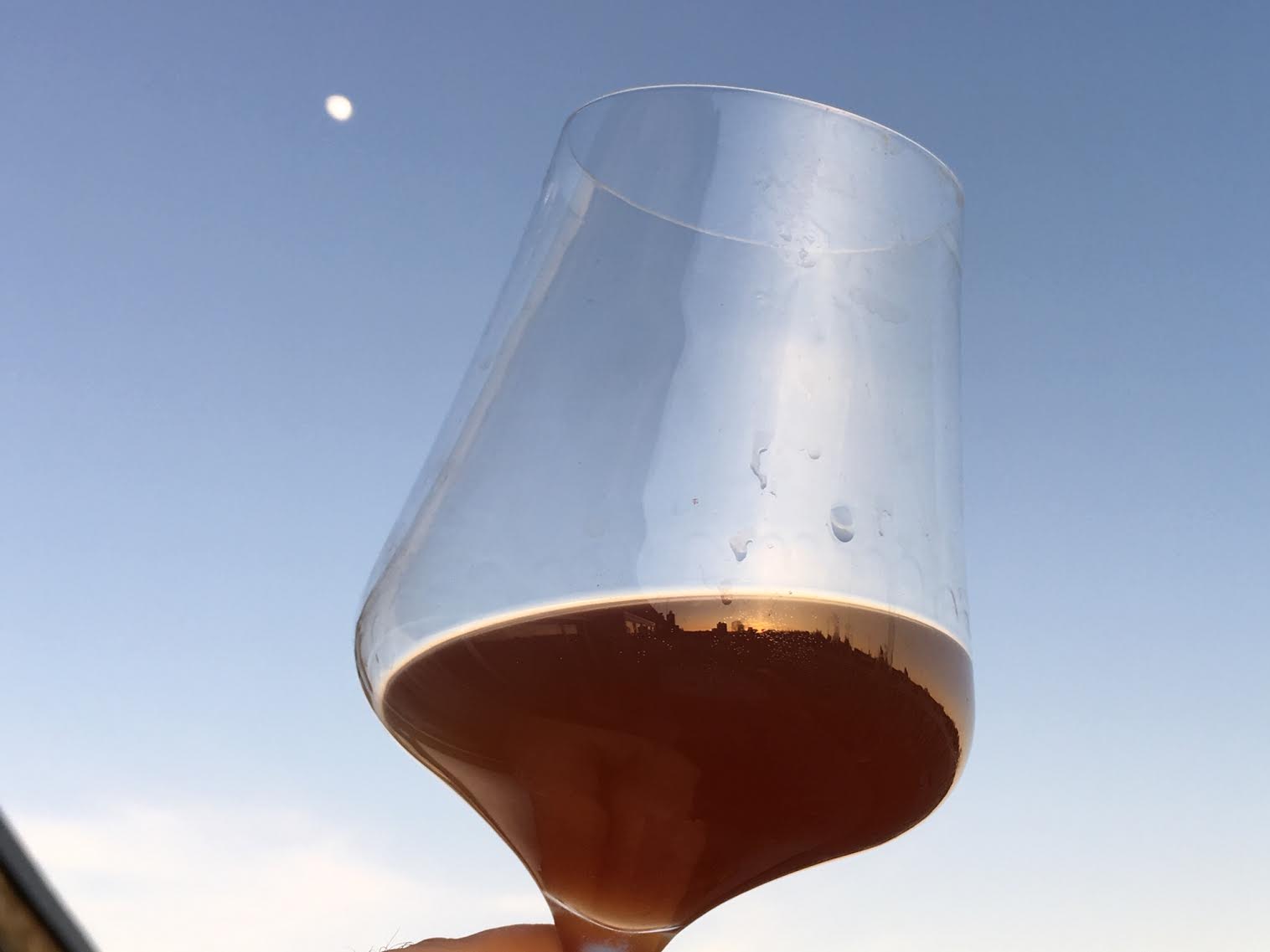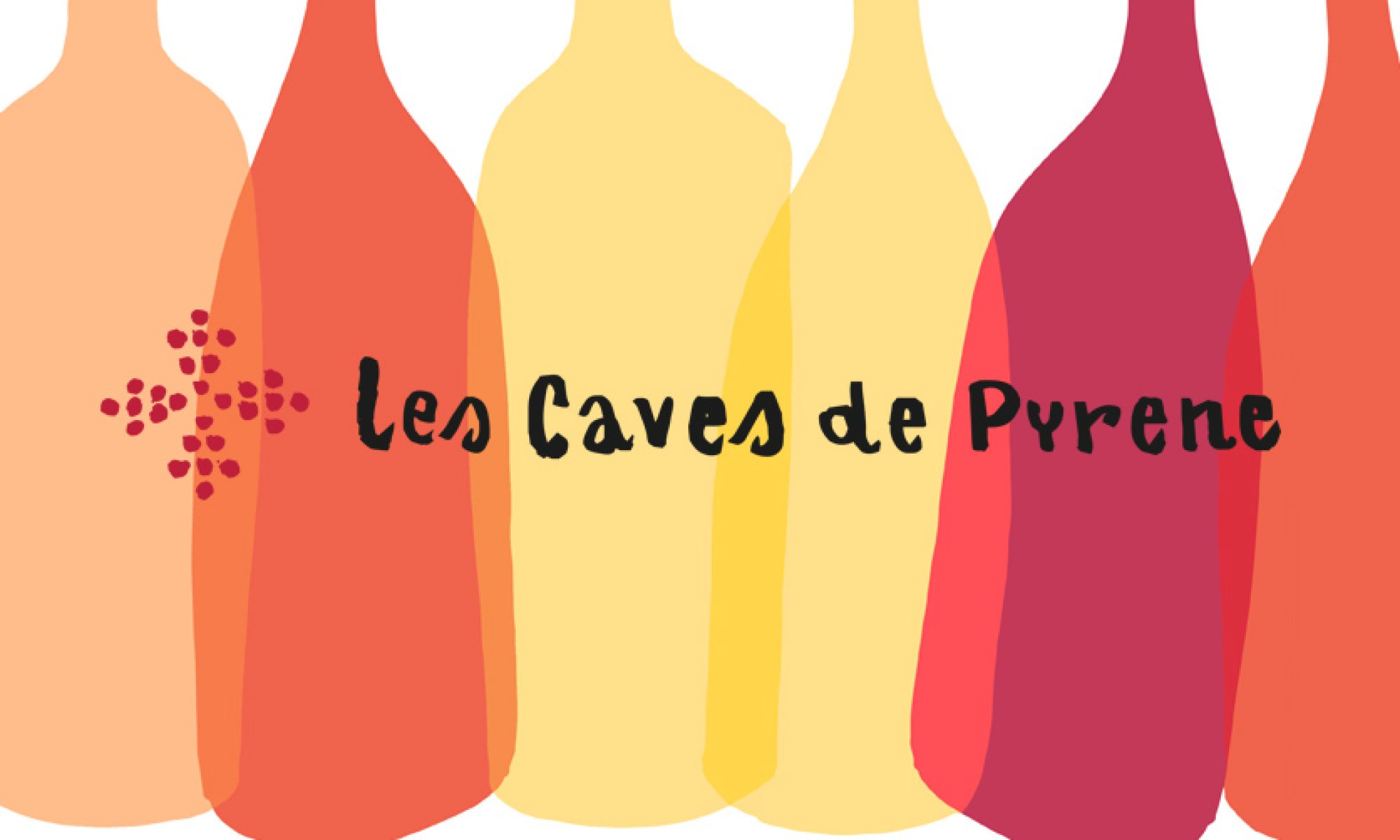Thirty years ago Jasper Morris MW was hosting a wine dinner at a restaurant I used to work at. I can’t remember the wine region we were showcasing, but one of the reds that had just been poured was…how do I convey it…decidedly on the gamey side (that’s gamey not Gamay). Jasper, having described the secondary aromatic characteristics of wines from this grape/region, invited comments/observations from the audience…
“Horse shit!!” proclaimed an American man in a stentorian roar. In my mind’s fond memory eye, he was wearing a Stetson at the time to add even deeper corroborative southern gravitas to his expostulation. Had he been in a starched lab coat and whispered 4-ethylphenol expialidocious, he could not have made his point more forcefully.
The following article is not intended to change minds. So, if you are in the habit of wearing an “I am brett nazi” t-shirt, then continue to wash, dry and iron it.

When the yeast brettanomyces (call me brett, as we are on familiar terms) forms in wine, it produces several compounds that may materially change its palate and the aromatic bouquet. One may say that it is horses for courses, as at low levels, some vignerons agree that the presence of these compounds has a positive effect on wine, contributing to complexity, and giving an aged/secondary character to some young red wines. Many wines even rely on brett for their distinctiveness. Step forward Chateau de Beaucastel from the 1980s to the sound of horse trumpets. Many other fine examples of brettwine have also graced an expensive decanter or several in their times, and have been lauded by critics for their distinctive personality. However, it is received wine wisdom that when the levels of the sensory compounds greatly exceed the sensory threshold, their perception is almost always a negative one. The sensory threshold can differ between individuals, and some find the compounds more unattractive than others. As brett can potentially spoil a wine, it is therefore generally considered to be a wine spoilage yeast, and its presence in wine often deemed a wine fault by professionals.
Let’s look at how brett behaves. Beyond their aromatic signatures, the saccharomyces and brettanomyces yeasts differ in terms of their growth patterns. Saccharomyces multiplies rapidly in a must, devouring the glucose and fructose, and dying off when either the sustenance runs out or the alcohol content gets too high. Brettanomyces, on the other hand, grows slowly, which is part of the reason it is rarely apparent until several months after fermentation. Brett is also able to feed on a wider range of substrates, and while residual glucose and fructose are its favourites, this organism also devours a wine’s “unfermentable” complex sugars as well as oak sugars.
Being a microscopic and versatile organism, brett can thrive pretty much anywhere, and is widely found in both vineyards and cellars. You don’t need bats in your barrels or pigeons on the bottling line to have it. And, on account of its ambient nature, some would claim it to be part and parcel of terroir, or constituting a specific element within a winery’s signature style. This is not so fanciful – many vignerons in sherry country will show you that different parts of the winery support different quantities and qualities of yeast. Others would point out the obtrusive nature of brett’s aromatics and assert that it masks terroir, and these people would consequently classify brett as a flaw, or a fault.
The compounds in brett responsible for contributing certain sensory characters to wine are:
- 4-Ethyphenol – aromas such as band aids, barnyard, horse stable, antiseptic
- 4- Ethylguiacol – aromas such as bacon, spice, cloves, smoky
- Isovaleric acid – aromas such as sweaty saddle, cheese, rancidity
These compounds can impart completely different sensory properties to a wine when they are present in different ratios. But they become a pretty arbitrary sets of smells when one tries to formulate them in language. In what olfactory universe, for example, do horse stables and band aids resemble each other?

Hold your horse (stables)!
As I have said, people differ widely in their sensitivity to these volatile odorant molecules. A priori knowledge also plays a role in the way we perceive the wines that we are tasting. Tasting triggers a complex neuropsychological process, and our subsequent responses are a combination of our previous education and training as well as expectation. Then there is the physiological, the moment you smell (or savour) a wine is the brain wrinkle when pleasure or aversion kicks in. For some tasters, as I have mentioned, brett has pleasurable associations, for others it is a fine line dependent on degree, and for yet others it is noxious, revealing a gaping chasm between the sparkling far shores of whistle-clean winemaking and the mudflats of downright-dirty. The argument often trotted out is that wine, being a product intended for the consumer market, must be subjected to the strictest standards of “consumer friendliness.” Personal taste doesn’t enter the equation when a common denominator of good taste has been decreed by chemists, oenologists and consumer acceptance panels. This common denominator though is pretty arbitrary despite that it can be partially measured by gas chromatography/mass spectrometry (GCMS), and the more wine experts you talk to, the more individual perspectives you get on the vexed issue of faults and flaws, and how personal taste is the real determinant in whether you think a wine is good or bad.
You can have the same grapes from the same vineyard, vinified in exactly the same fashion with the same strain of brett two years in a row, and you’ll have a distinctly different sensory outcome.
Smells and tastes are actually the final result of whatever happened during the process of winemaking. Saying “I don’t like this wine” or “this is unfit for human consumption” is merely stating that, notwithstanding the probable presence of a so-called spoilage yeast, that there is also an element of the wine that feels wrong as far as my palate is concerned. It may be the perception of imbalance or an overly dominant flavour or texture, but in the final analysis, these are experienced by individuals according to their respective taste tolerances. Because brett can indeed be tolerated – and even enjoyed – for its idiosyncratic aromas and flavours. (The same holds true also for volatile acidity and oxidation). Nor should such a flaw be seen as a downright negative simply because its presence in the wine is adventitious. There are innumerable variables in the making of a particular wine. It may be that certain vineyards produce grapes that are predisposed to produce bretty wine; it may also be that the fermentation went down a particular route in a specific vintage. For example, you can have the same grapes from the same vineyard, vinified in exactly the same fashion with the same strain of brett two years in a row, and you’ll have a distinctly different sensory outcome. The reason for this is that brett’s expression depends entirely on what it had to eat, which has everything to do with what happened in the vineyard that year. In that sense, brett’s reaction is a kind of exaggerated look at the unseen forces that shape a vintage.
The other way of looking at brett is seeing is as part of the overall creative wine cycle. Vineyards are not sterile places (some are, perhaps) and grapes are not squeaky-clean. In reality, they are covered in microbial life, and when you crush them, you are introducing a substantial inoculum. These microflora are catalysts in making wine beyond mere fruit. Fermentation, therefore, becomes about different types of transformation, rather than preserving some idealised version of clean fruit.
And we value the flavours that are the by-products of transformation.
Tastes change too. I was weaned on wines that sported brett as their signature. Typical natty wine fundamentalist, I hear you cry. No – I am talking about classic Bordeaux from the 70s and 80s: the Gruaud-Laroses, Leoville-Lascases of this world. The wines had a meaty, umami quality that marked them out. Prim claret that had a dark side and was not afraid to explore its animal nature. As so many wines tasted like this, I thought it was natural that wines should taste like this. But this concept of “brettiness” is also fluid, as not only do people have different levels of sensitivity, but grapes have different levels of congruity.
I still feel that brett sits well with certain grapes from certain regions (such as the southern Rhône, Languedoc-Roussillon and southern Italy), as it adds to the perceived funk and soul that the regions are known for. Wines that have a naturally broad palette of aromas and flavours, particularly those that are especially savoury. I refer to these wines as possessing the quality of death-in-venison. Other less punful descriptors would be sanguine, rustic, wild…
Conversely, brett is less appealing in wines known for pure aromatics and elegance. Burgundy, and Pinot Noir in general, Syrah and Nebbiolo, wines where lucidity and focus is highly prized, where nuance lifts the wine to another level.
Why is it that natural wines – in certain wine discussion circles – are accused of being brett wines. As if brett was the natural outcome of low-intervention winemaking. This is both a logical fallacy and well as classic confirmation bias. It is like saying that just because a trapeze artist stops using a safety net, then he or she will inevitably fall. Furthermore, this is a ridiculous simplification as brett can present anywhere.
Better to say that some wines exhibit bretty character. Some natural wines exhibit bretty character too. This character manifests differently according to the wine and the vintage. If the vigneron or winemaker deems this character undesirable, then they will take various measures to prevent it occurring as long as those measures do not compromise the integrity of the wine as they see it.
If one is going to find a correlation between natural wine and the presence of brett, it might be more appropriate to say that what was initially attractive to many about bretty wines was that they did not conform to the model winemaking that we were told was the sign of good winemaking. A new generation of wine drinkers were more than happy to get down with the funk, to challenge their palates with wines that had seemingly liberated themselves from the trammelled path. The palate for the offbeat and funky was not restricted to natural wine, of course. Cloudy cider, unpasteurised cheese, brett beer, pickles and ferments are made in the same idiom. But what people sometimes forget is that natural wine is just another kind of transformation.

Appreciation of wine is a matter of hitching your colours to a particular style. There are more things in heaven and earth, however, than the norm, and if this wine exhibits atonality, or that one displays a jagged shape, and none of them conform to the sugary pop rhythms of modern wine or the classical structure of old-fashioned wine, then that says more about the nature of the taster than the wine itself. Throughout history every artist, musician and writer who has taken a dramatic new aesthetic direction has been derided by the critical establishment for they are perceived to be breaking the code.
One should always be prepared to question the received wisdom about faults. The conclusions drawn from the science itself are not themselves watertight; instead they reveal the social and cultural context in which they are made.
Natural winemaking is about the very process of investigation: the encounter with and shaping of raw materials. It is about the nature of adaptability. It is about the culmination of process and transformation into something original and unique that people can appreciate and respond to in their own way. That is alchemy. That is creation. For real wines are…living wines, flaws and all.
There are more things in heaven and earth than the norm, and if this wine exhibits atonality, or that one displays a jagged shape, and none of them conform to the sugary pop rhythms of modern wine or the classical structure of old-fashioned wine, then that says more about the nature of the taster than the wine itself.
Back to our earlier example. That wine may have flavours of clove, spice, smoky bacon – or shall we write it off blithely as being irreducibly tainted by 4-Ethylguaiacol? Identifying the fault negates the wine, the grower, as well as other wines and other growers. It’s the paralysing paradigm that puts the taster ahead of the wine and makes the wine no more or less than the sum of its faults. The 17th century pamphleteer Roger L’Estrange wrote: “Some read books only with a view to find fault, while others read only to be taught; the former are like venomous spiders, extracting a poisonous quality, where the latter, like the bees, sip out a sweet and profitable juice.” So do we treat with the wine with respect or interrogate it to death? Or do we say “horse shit!” Or “it smells of horse shit, but I like it!” Or maybe simply ditch the critical goggles occasionally and relax – with a glass of wine. In the end, people are free not to drink what they don’t like.
And, of course, this is all a romantic, quasi-anthropomorphic view of wine and its taste. We need to remember that aromas, and their taste equivalent, take us on a journey. And that journey is a personal, idiosyncratic one. The mind is its own place and in itself, can make a heaven of hell, a hell of heaven.
By the way, the term Brettanomyces comes from the Greek for “British fungus”. So, let’s own this thing! As Ogden Nash memorably did not write:
Do not fret
It’s not a crisis
But this wine
Has Brettanomyces

